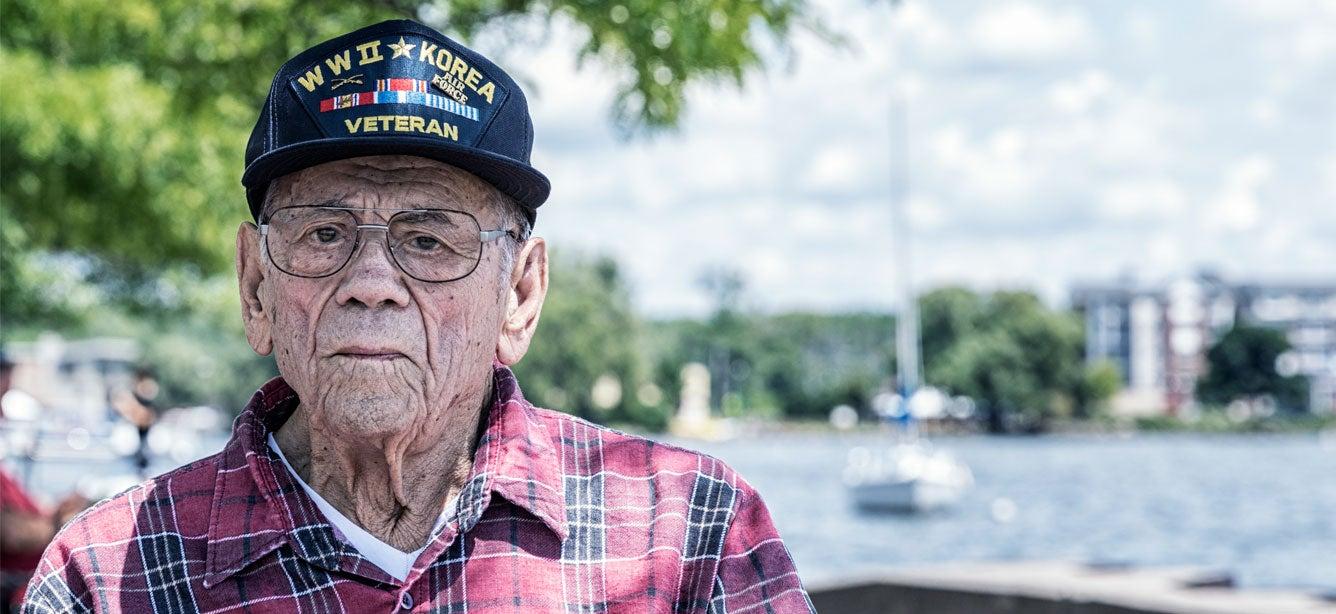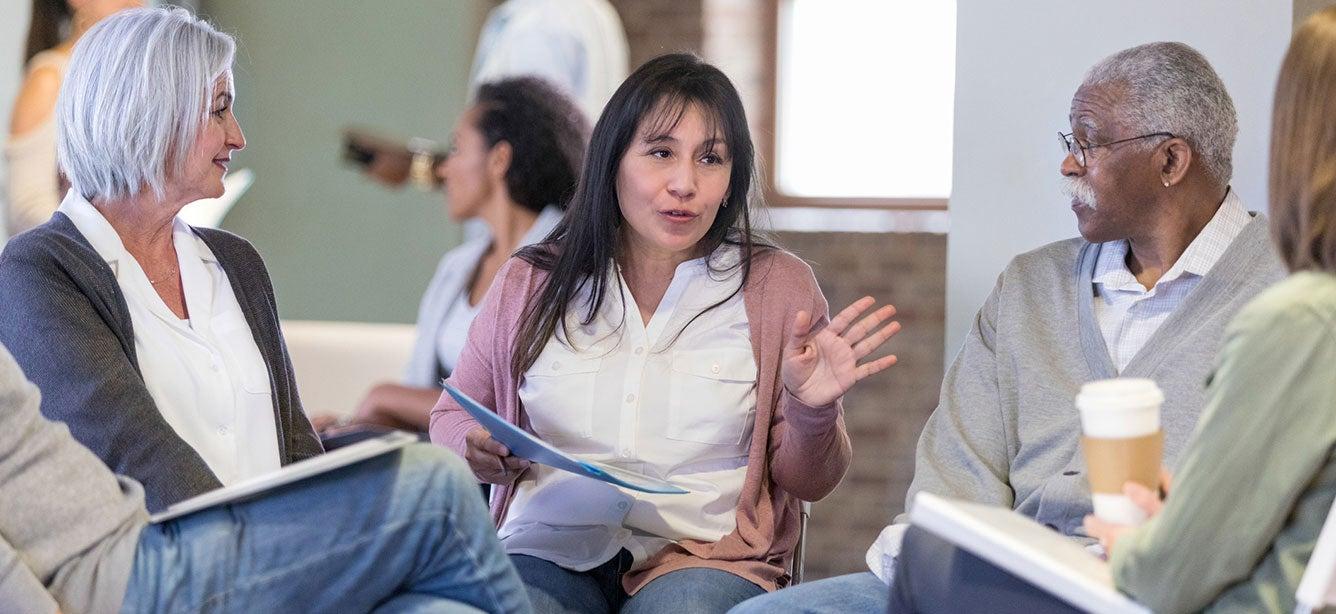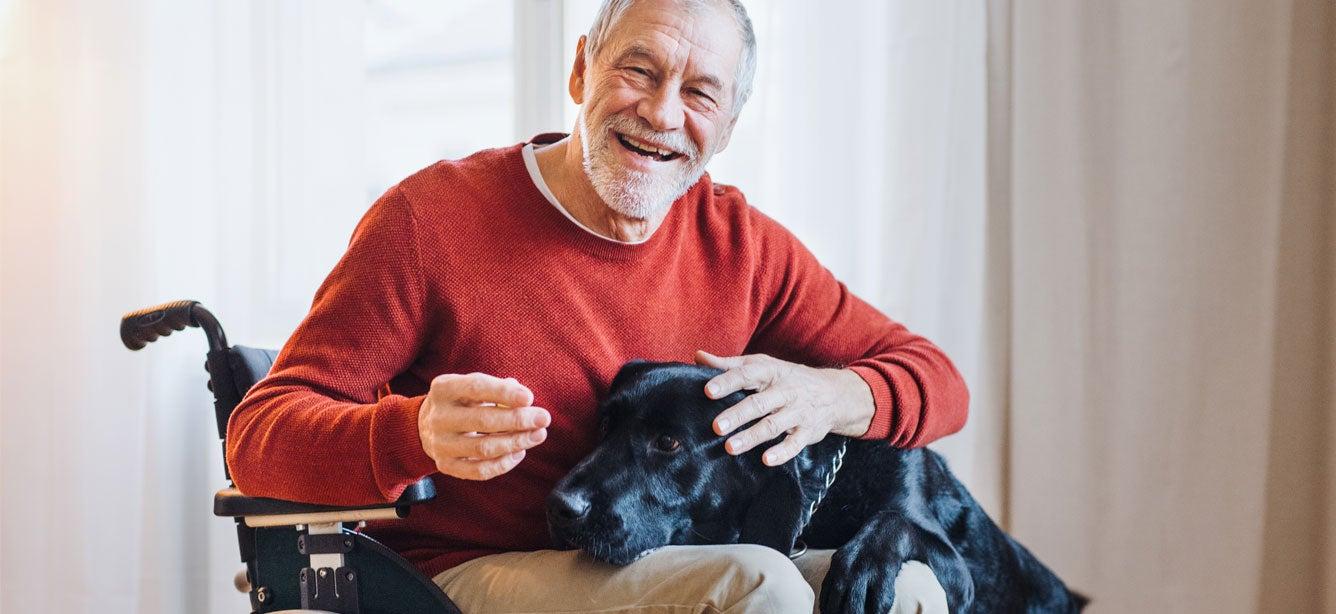Tip Sheet: Engaging Veterans in Evidence-Based Programs
8 min read

What is the Department of Veterans Affairs?
The U.S. Department of Veterans Affairs (VA) provides health, disability, and long-term care supports as well as a range of vocational, educational, and burial benefits to veterans of the U.S. military service including their dependents and survivors. The VA includes the Veterans Health Administration (VHA), Veterans Benefits Administration, and the National Cemetery Administration.
VHA is an integrated health care system divided into 18 regional networks called Veterans Integrated Service Networks (VISNs), each of which cover more than one state. They contain hospitals, residential care facilities, and outpatient clinics offering primary and specialized care. VHA geriatrics and extended care services, mental health services, and caregiver support programs ( National Caregiver Support Line: 855-260-3274) are all important services relevant for older veterans and their families.
Why seek collaboration with the VA?
There are currently about 20 million veterans1 of the U.S. armed forces. As of 2015, two-thirds of the nearly six million veterans that use the VHA had at least one chronic condition and one-third had at least three. Some of these veterans returned from service with chronic conditions; others develop them as they age.
Individuals with ongoing health conditions accounted for 65% of the VHA’s health care costs, with the most prevalent conditions including diabetes, high cholesterol, and hypertension and the most costly conditions including heart failure, chronic kidney disease, and chronic obstructive pulmonary disease.1 All of these conditions are also present in the top 10 most common ongoing health conditions among the general population of adults aged 65+ in the U.S. Furthermore, the VHA serves a growing number of older Veterans who are at risk for falls and fall-related injuries both at home and in health care facilities.
Evidence-based health promotion programs focused on chronic disease self-management education (CDSME), falls prevention, physical activity, behavioral health, and nutrition can help veterans manage ongoing health conditions and prevent costly falls. Establishing partnerships with veterans organizations in your community helps to increase opportunities to reach older adults who seek services through the VA system and collaborate with health care providers to refer patients to evidence-based programs (EBPs). Partnerships also provide opportunities to leverage existing infrastructure to implement EBPs by sharing program leaders and coordination responsibilities. There may also be opportunities to recruit veteran volunteers to promote or lead workshops.
How can I collaborate with the VA?
- Contact the U.S. Department of Veterans Affairs for information about your state Veterans Affairs office and the VISN responsible for VHA programs in your region.
- Consider developing a memorandum of agreement to describe how your organization and the VHA facility can support each other’s efforts.
- Ask participants about their veteran status to document the extent of your reach to veterans. For example, it is better to ask, “Did you serve in the military?” rather than to ask, “Are you a veteran?” because this second question is sometimes misunderstood to mean “Do you receive benefits from the VA?” or “Did you serve in a war?” Watch this National Association of Community Health Centers recorded webinar for more tips.
- Distribute information concerning EBPs and make presentations to the state Veterans Affairs office, VA medical centers, community-based outpatient clinics, and local veterans service organizations such as the American Legion, Disabled American Veterans, or Veterans of Foreign Wars (VFW) Posts, and other sites where veterans go for assistance or socialization.
- Partner with other community-based agencies that serve veterans to offer EBPs.
- Check with the VHA health facility near you to speak with the Director of Ambulatory Care, also known as Patient Aligned Care Teams (PACT). PACTs have been rolled out in every VA facility and are VHA’s form of primary care, providing personalized, patient-driven team-based care to enhance wellness and disease prevention. Suggest that EBPs be included through PACT and offer access to training resources so veterans may be trained as lay leaders.
- Contact the Veteran-Directed Home and Community Based Services Program. This program provides a flexible budget for services, managed by the veterans or their family caregiver, for home and community-based care services that are necessary to help veterans continue to live at home or in their community. Initial contact with this program can enable you to connect with the full range of home and community-based programs offered through VHA. This information can then be shared with providers, patients, and caregivers.
Strategies for reaching veterans
- Keep in mind that there is no wrong door to reaching out to veterans—VFW, housing facilities for veterans, veterans service clubs, the American Legion, VA medical center or clinic, state veterans homes, senior centers, churches, and other community-based organizations.
- As you develop an outreach plan, seek out and include veterans as part of your exploratory committee. Think “outside of the box” to target veterans by using social media and reaching out to organizations in your community which have a volunteer component since veterans are committed to serving their community.
- Since the majority of veterans are male, seek out male veterans to recruit their peers to participate in EBPs. They may be more effective at communicating the value of the program to other veterans.
- Similarly, when your target group is female veterans, seek female recruiters who may connect more readily with other female veterans.
- Explore whether your state has a master data sharing agreement with the local VA health care system. This may help you gather de-identified data that can assist in targeting promising concentrations of veterans.
- To find out more about veterans status by geographic area, go to this census factfinder site.
- Ask the United Way, area agencies on aging, or other local organizations if they routinely ask for Veteran status on their hotlines. If they do, explore a partnership to refer those callers to organizations that offer EBPs.
- Form strong relationships with veterans that are program champions to facilitate partnerships with veteran service organizations.
- Explore working with one or more contacts you establish at a VHA health facility in an effort to build a local Veteran Community Partnership.
- Understand that generally, VA offices will only release the aggregate number of workshop participants, completers, and leaders, but will not provide individual-level data, even if it is de-identified.
- Become familiar with this Older Veteran Behavioral Health Resource Inventory for information about resources to help health and social service professionals support older veterans and other older adults who have or are at risk for behavioral health conditions.
Successful partnerships from the field
NCOA’s Center for Healthy Aging compiled the following list of successful initiatives to reach veterans across the U.S. Some of the examples represent the efforts of the Administration for Community Living’s CDSME or falls prevention grantees.
- A Matter of Balance has been offered to veterans undergoing vision rehabilitation in California, Washington, and Connecticut.
- In Michigan, an area agency on aging has held workshops at the VFW and other locations that serve veterans.
- The Vet Self-Care Program for Veterans works with veteran organizations across the state of Oklahoma, including the State Department of Veteran Affairs, the Governor’s Taskforce on Veterans Health, Humana’s Veteran Programs, the National Association of Black Veterans of Oklahoma, and the local VFWs. The program uses trained Veteran volunteers to empower fellow veterans, their spouses, family members, and caregivers with cognitive self-management skills to help reduce the stress, anxiety, depression, and feelings of hopelessness associated with aging and chronic conditions, whether service connected or not. Vet Self-Care helps improve problem solving skills to better cope with the rapidly changing technology-based society, encourages Veterans to keep moving through exercise and family activities, and shares ways to partner with health providers to improve health outcomes and reduce health costs.
- The Utah Department of Health has been working with the Veterans Administration for five years, implementing CDSME and other EBPs. The two organizations recognized that it would take time to lay the groundwork and reach the right people to establish an integrated, sustainable system, so spent two years building their partnership before CDSME programs were offered. During that time, an area agency on aging was chosen to pilot the program and veterans were trained as leaders. The VA now has their own CDSME leaders–committed veterans who are also advocates for the program–and has begun offering EnhanceFitness and the Chronic Pain Self-Management Program. The programs are usually held at VA hospitals or clinics, but some are planned with local partners and held in community sites.
Sources
1. U.S. Department of Veterans Affairs. National Center for Veterans Analysis and Statistics. Accessed August 31, 2017. Found on the internet at https://www.va.gov/vetdata/veteran_population.asp



